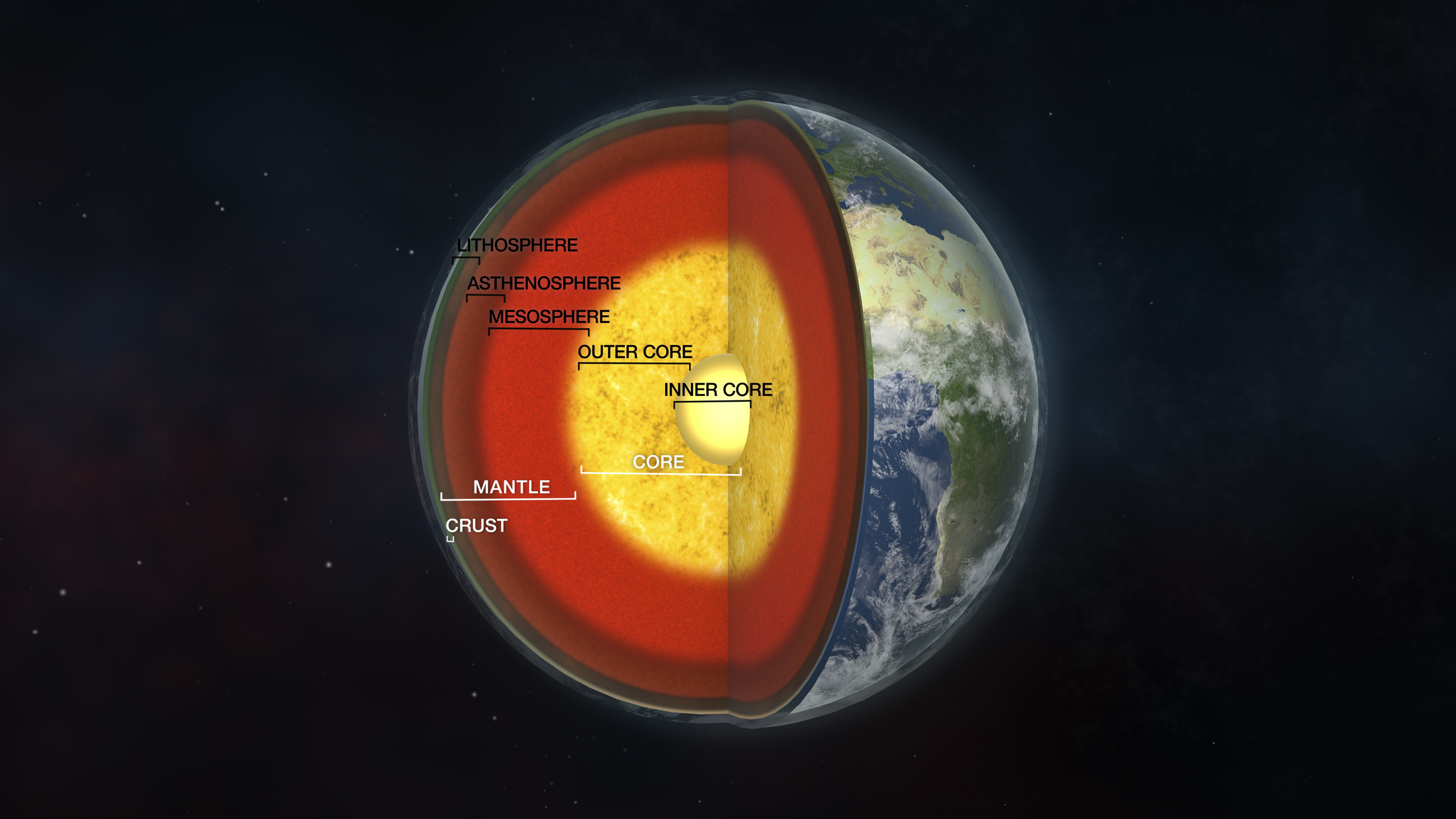
Scientists have eliminated one possible origin for Earth's continents.
Despite the importance of Earth's continents, the huge pieces of the planet's crust that divide its oceans, very little is known about what gave rise to these large landmasses that make our planet unique in the solar system and play a key role in allowing it to host life.
For years, scientists have theorized that the crystallization of garnet in magma beneath volcanoes was responsible for removing iron from Earth's crust, allowing the crust to remain buoyant in the planet's seas. Now, new research is challenging that theory, forcing geologists and planetary scientists to rethink how this iron may have been removed from the material that would go on to form the continents we see today on Earth.
Related: Planet Earth: Everything you need to know
The crust of Earth, the planet's outer shell, is divided into two rough categories: The older, thicker continental crust; and the younger, denser oceanic crust. New continental crust forms when its building blocks are passed to Earth's surface from continental arc volcanoes. These are found in parts of the globe where oceanic plates sink beneath continental plates, regions called subduction zones.
The distinction between dry continental crusts and oceanic deep-sea crusts is the lack of iron in the continental crust. This means continental crusts are buoyant and rise above sea level to form the dry land masses that make terrestrial life possible.
The low levels of iron found in continental crust has been hypothesized to be the result of the crystallization of garnet in the magmas beneath these continental arc volcanoes. This process removes non-oxidized iron from the terrestrial plates, while also depleting iron from molten magma thus leaving it more oxidized as it forms continental crust.
A team of researchers led by Cornell University assistant Professor Meghan Holycross and Smithsonian National Museum of Natural History geologist Elizabeth Cottrell improved the understanding of the continents by setting about testing and eventually eliminating this hypothesis first formulated in 2018.
"You need high pressures to make garnet stable, and you find this low-iron magma at places where the crust isn't that thick and so the pressure isn't super high," Cottrell said in a release, adding that the team was skeptical of the crystallization of garnet as an explanation for the buoyancy of continental crust.
Creating the intense conditions of Earth's interior in the lab
To test the garnet theory, the team recreated the massive pressure and heat found below continental arc volcanoes using piston-cylinder presses located at the Smithsonian Museum's High-Pressure Laboratory and at Cornell University. These mini-fridge-sized pistons composed of steel and tungsten carbide can induce massive pressures on tiny rock samples while they are simultaneously heated by a surrounding cylindrical furnace.
The pressures induced were equivalent to 15,000 to 30,000 times that created by Earth's atmosphere and temperatures generated were between around 1,740 and 2,250 degrees Fahrenheit (950 to 1,230 degrees Celsius), hot enough to melt rock.
In a series of 13 different lab tests performed by the team, Cottrell and Holycross grew samples of garnet from molten rock under pressures and temperatures mimicking conditions inside magma chambers deep in Earth's crust.

These lab-grown garnets were analyzed using X-ray absorption spectroscopy which can reveal the composition of objects based on how they absorb X-rays. The results were compared to garnets with known concentrations of oxidized and unoxidized iron.
This revealed that the garnets grown from rocks in conditions resembling the interior of Earth didn't take up enough unoxidized iron to explain the levels of iron depletion and oxidation seen in the magmas that form continental crust.
"These results make the garnet crystallization model an extremely unlikely explanation for why magmas from continental arc volcanoes are oxidized and iron-depleted," Cottrell said. "It's more likely that conditions in Earth's mantle below continental crust are setting these oxidized conditions."
The geologist added that what the team's results can't currently do is provide an alternative hypothesis to explain the creation of continental crust, meaning the findings ultimately pose more questions than they answer.
"What is doing the oxidizing or iron depleting?" Cottrell asked. "If it's not garnet crystallization in the crust and it's something about how the magmas arrive from the mantle, then what is happening in the mantle? How did their compositions get modified?"
These questions are difficult to answer, but Cottrell is currently mentoring researchers at the Smithsonian that are investigating the idea that oxidized sulfur is causing the oxidation of iron beneath the Earth's surface.
The team's research was published Thursday (May 4) in the journal Science.







